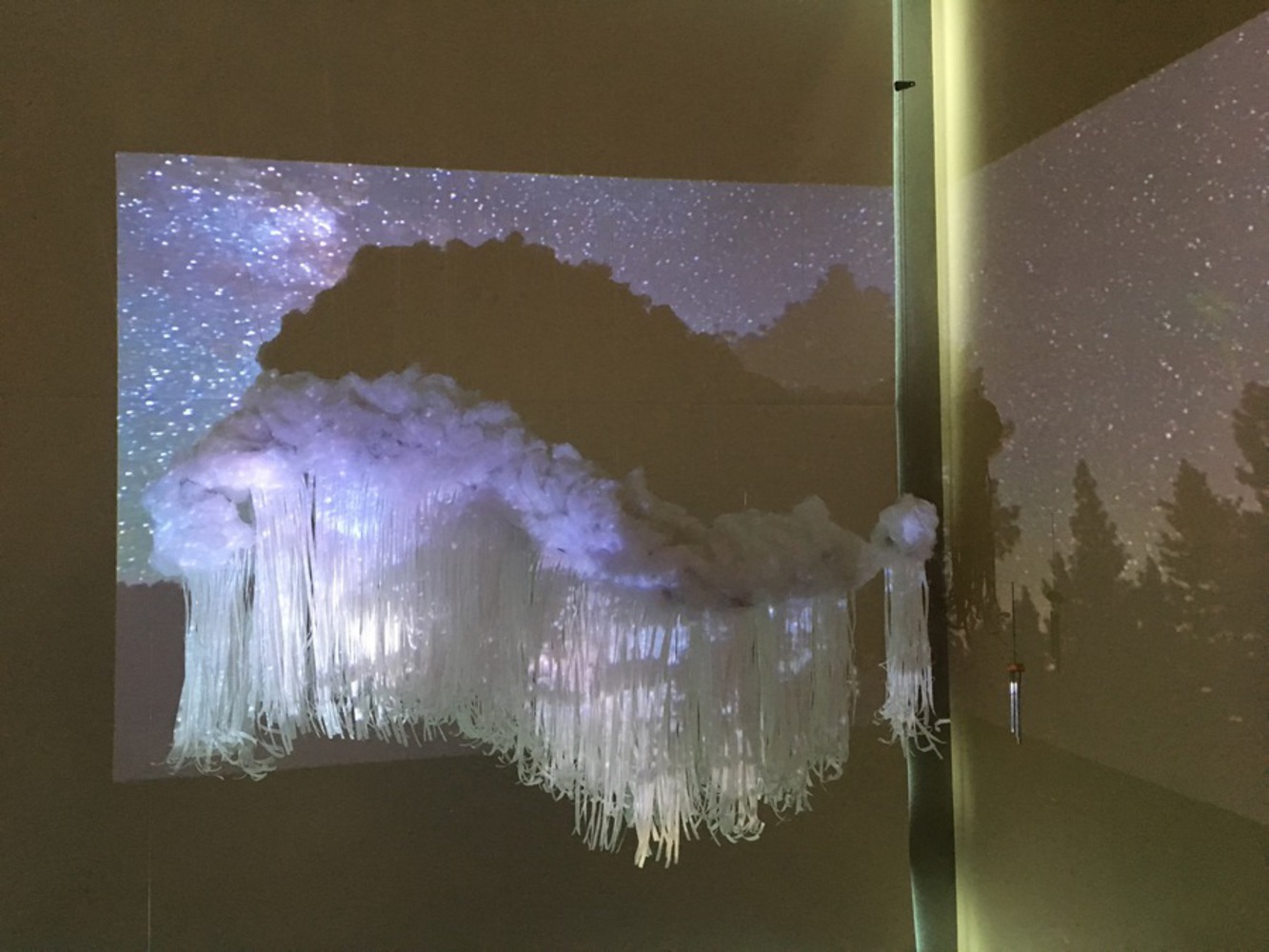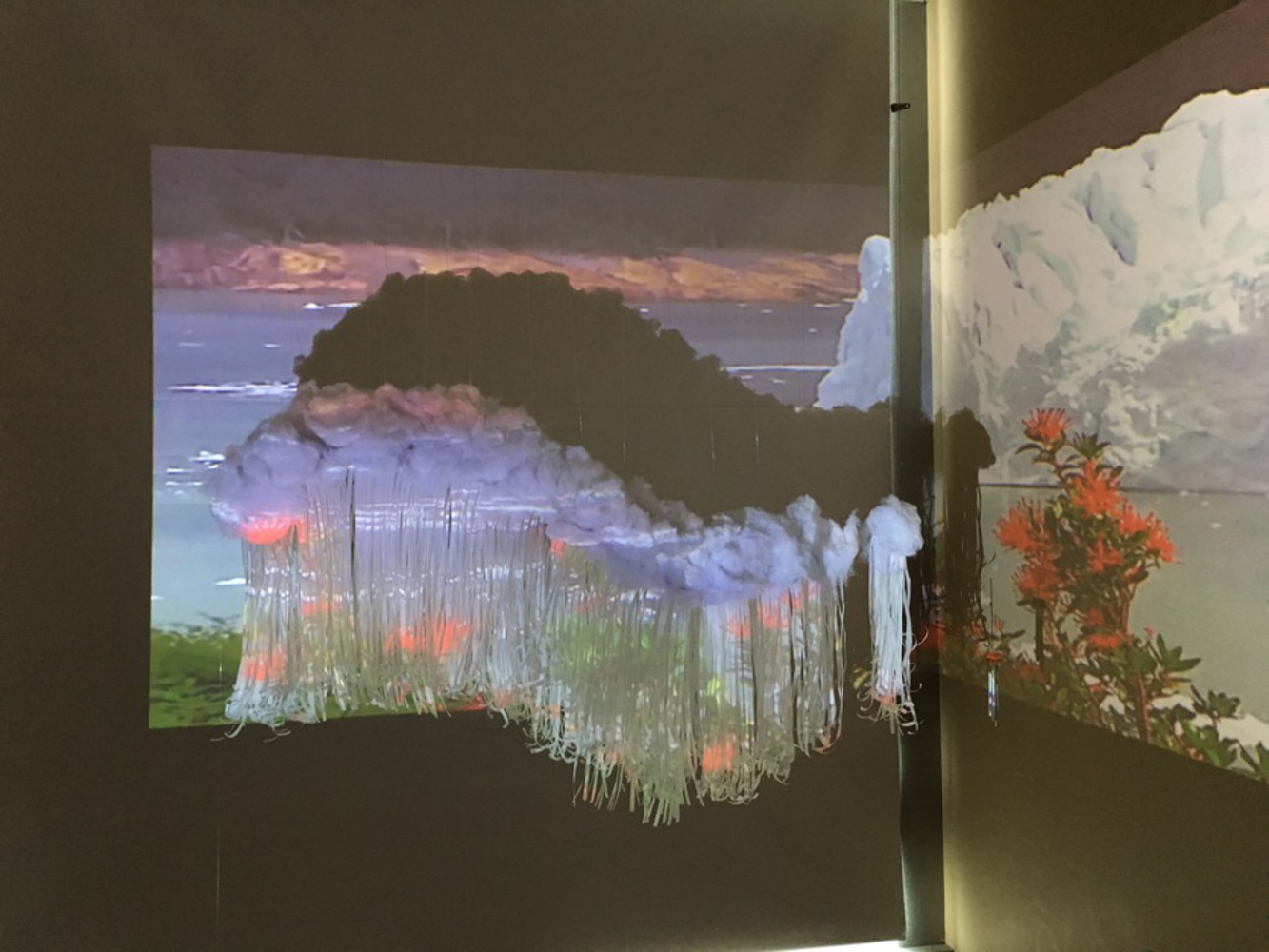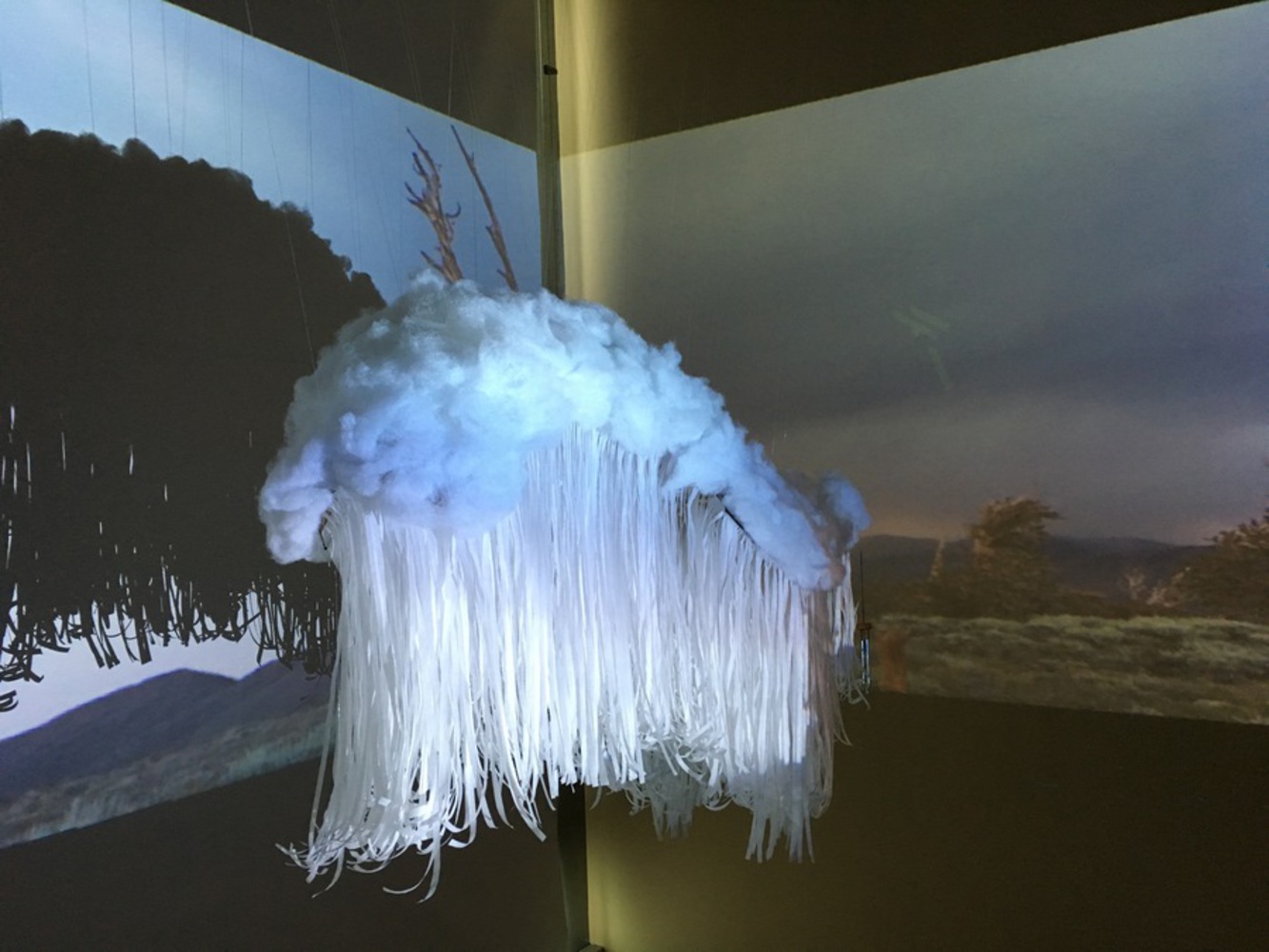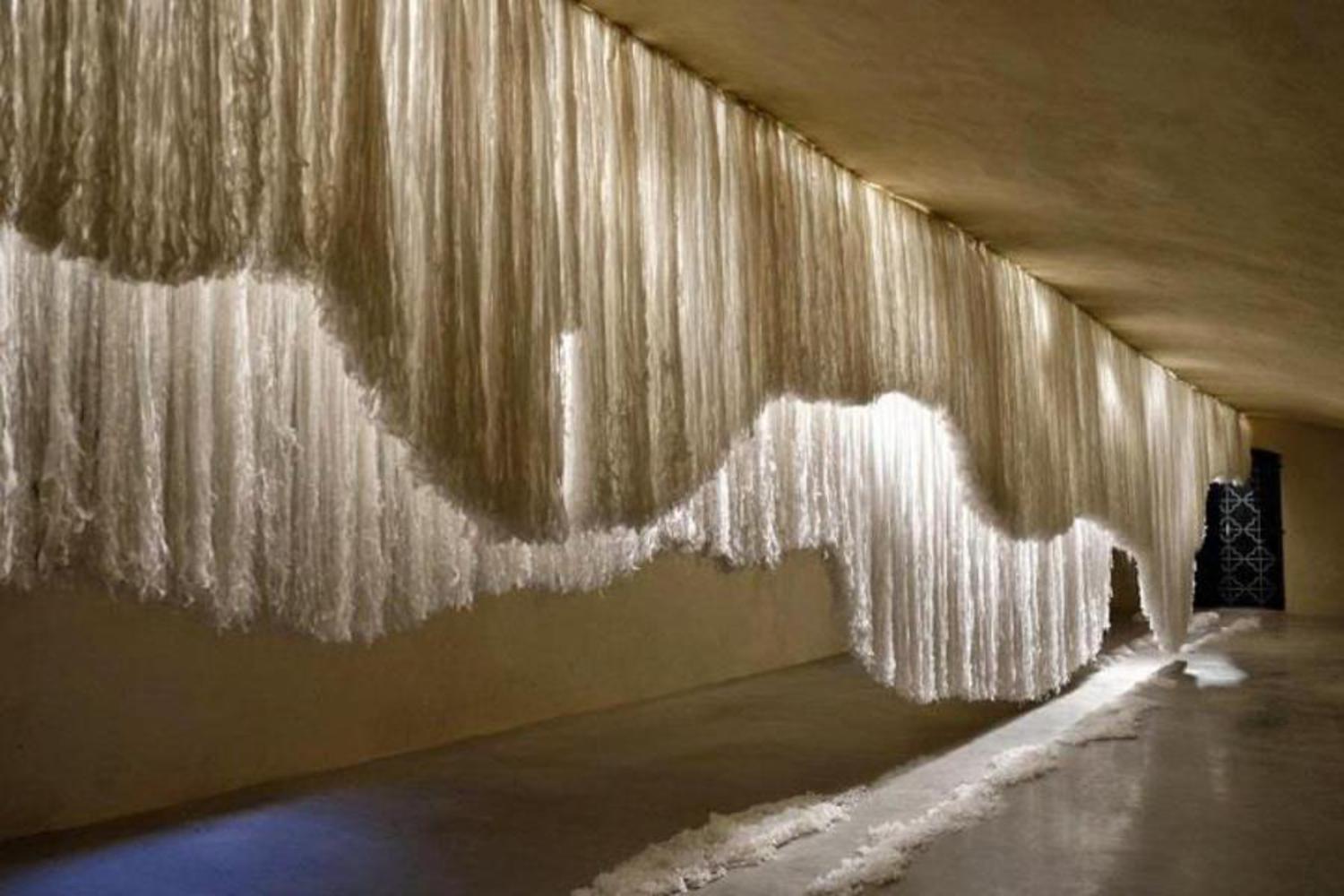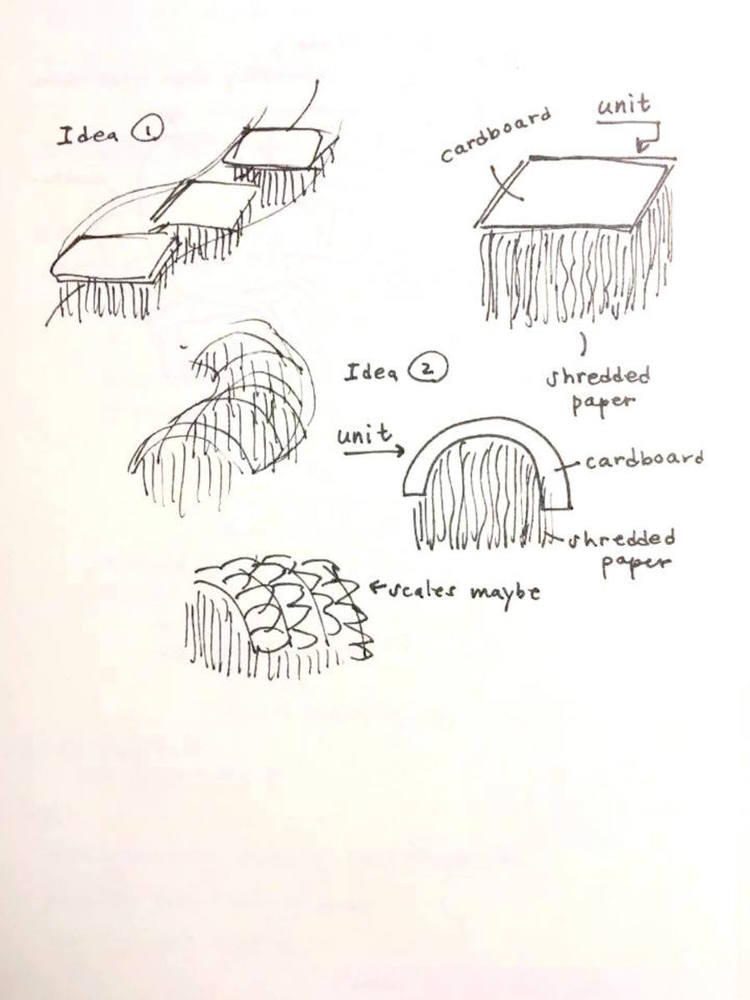Precedents (Carolyn)
1. Various paper installations by Daniele Papuli
Daniele Papuli is the artist who created the above installation, which inspired parts of our project design. Unfortunately, I can't find any info specifically about this piece, but the artist is known for his delicate and intricate paper sculptures that explore form and space as well as the versatility of paper as a material. The installations are assembled out of countless sheets or strips of cut paper to create "numberless sensorial, visual, and tactile suggestions" depending on how the paper is manipulated. In our project, we would also like to use paper in different ways – i.e. shredded vs. cut from a sheet – in order to create an interesting visual and tactile experience for visitors.
2. the event of a thread, by Ann Hamilton (2012-13)
I first encountered this work in a Looking Out.
"the event of a thread" was an exhibition at the Park Avenue Armory. It consists of several components: First, a white sheet in the middle of the room that is connected to a multitude of threads which are woven into the ceiling. The motion of visitors on the swings causes the sheet to undulate. There are also audio and written components.
I think that the part of this installation that relates most to our project is how it is interactive through play. Visitors are able to participate by moving around on swings, which is very appealing to adults because it is an activity reminiscent of childhood days. The softness and purity of the white sheet also evokes these kinds of feelings. So, I hope we can incorporate these feelings and aspects of play into our installation as well.
3. koinobori
Koinobori are koi-shaped wind socks that are flown in Japan to celebrate Children's Day in early May. Koi (carp) are chosen for their spirit, strength, and determination, which are of course desirable aspects in children. The image of the koi moving in the wind in clear, warm weather also evokes strong feelings of freedom. We feel that the koinobori is a good precedent for our project based on the symbolism of childhood and freedom, and we would like our dragon to have a similar design as well with a body that can move about (somewhat) freely. I also find it appropriate how it's sometimes said that a koi swam upstream to become a dragon.
Precedents (Min)
"With Wind," an installation at Ai Weiwei's Alcatraz exhibition
http://www.for-site.org/wp-content/uploads/2014/09/ai-with-wind-1-710x355.jpg
Ai Weiwei’s With Wind is an installation in Alcatraz that has a shape of Dragon. The installation has along body shaped like a traditional Chinese dragon kite and suspended by strings from the ceiling, which snakes gracefully throughout the open factory floor. Its body is covered with painting of flowers that are from countries who promotes liberty and quotes by prominent dissidents.
Ai Weiwei tried to talk about freedom by installing this piece of art in the prison of Alcatraz. The contrast between the background and the colorful dragon gives a dramatic experience to the viewers.
Our installation, the fluffy paper dragon will build up to Ai Weiwei’s idea with dragon. We want our installation to have the figure of dragon, and this is why I looked into this specific piece of art. We intend our dragon also incorporate the spirit of liberty as we did in our childhood. By adding interactive ability to the installation we make, we will try to go one step further from where Ai Weiwei was.
Andy Warhol Silver Clouds
https://i.ytimg.com/vi/cDzx2hnnK_w/maxresdefault.jpg
Andy Warhol’s Silver Clouds is an installation art with bunch of floating shining balloons. The balloons are half full of helium thus floats around the viewer as if it is in a different world. I was deeply moved by this art when I went to the Andy Warhol museum. As I interacted with the art, I could feel joy, and I could also observe that other people wanted to participate and interact with this piece of art.
Clouds created an ethereal, joyful atmosphere, and challenged traditional expectations of art by mingling with and touching the viewer.
The main takeaway from this art is the interactive part of it. We want to implement the Silver Clouds’ interactive ability to our installation so that our installation does not end up with mere space holder but a truly interactive piece of art. We hope we can make this project into a dragon that is so tempting to interact with.
Rhythm of shadows By Yemi, Di Wang, Min Hwang and Joanna Baranowski
Rhythm of shadows is a former ideate project that the team I was in did for module 3: physical installation project. This project is done to represent a different special atmosphere inside the Hunt library. The half transparent paper strips that come down from the ceiling represents different space according to the media component it had.
In our project, we are going to build up more on the movement aspect of the Rhythm of shadows. The movement aspect of this piece was wind: when wind blow from one end, the strips moved towards to the ceiling. The original intent was to represent the movement of grass that lies down when wind blows, but this idea was not explored thoroughly due to the time constraint and technical constraint. In this installation project reprise, we are going to move this movement aspect to interactive aspect, so that people can actually see the effect of their interaction with the piece as a movement of the piece. We are taking the idea of paper strips and how the installation grows from the top of the ceiling.
